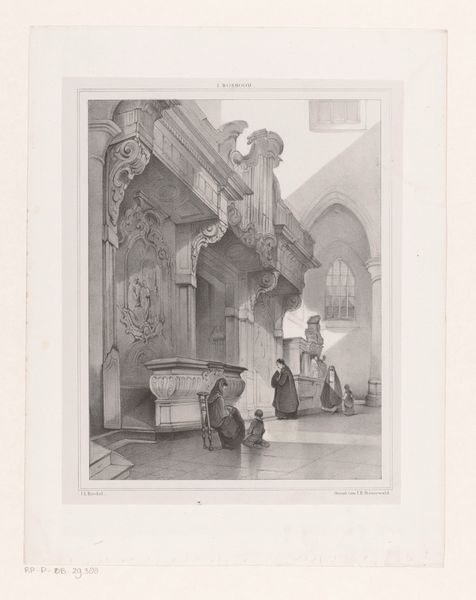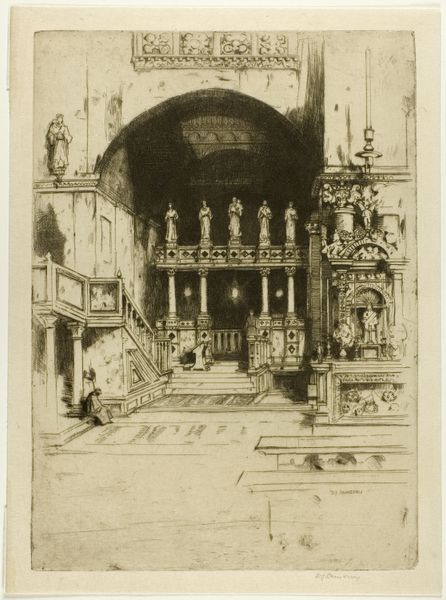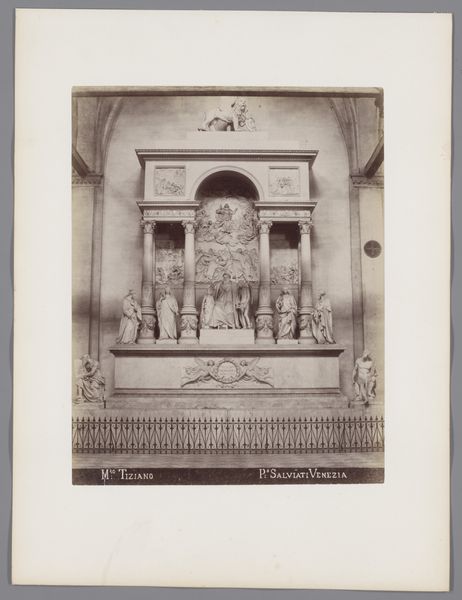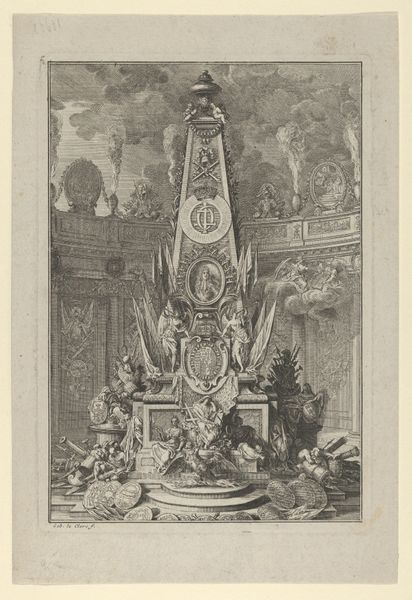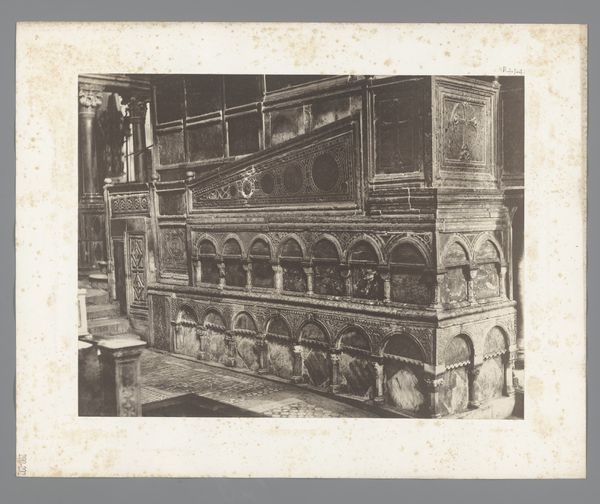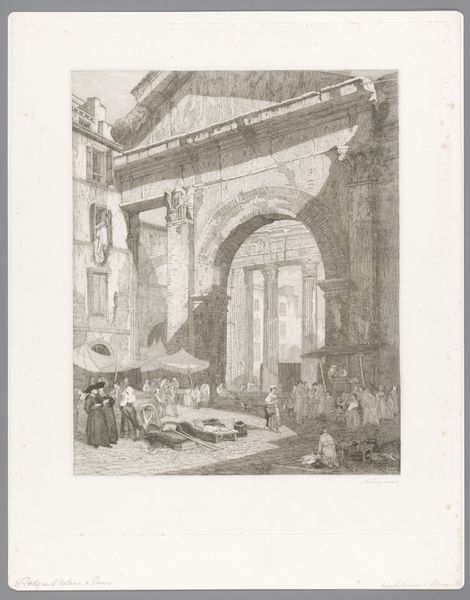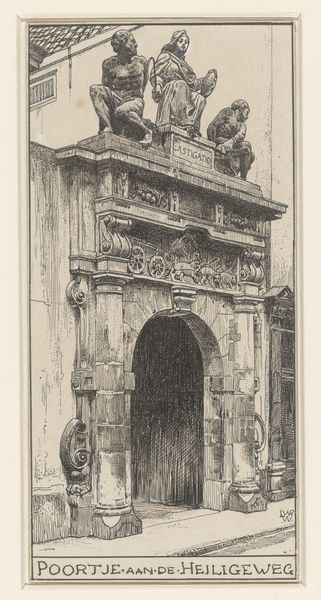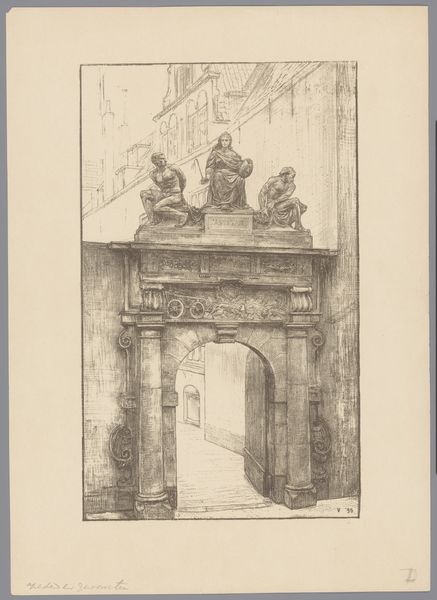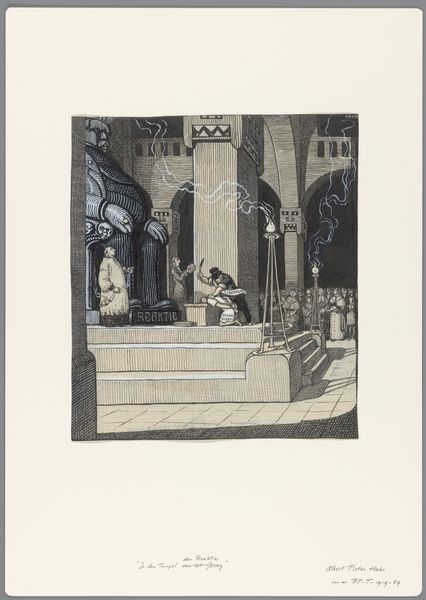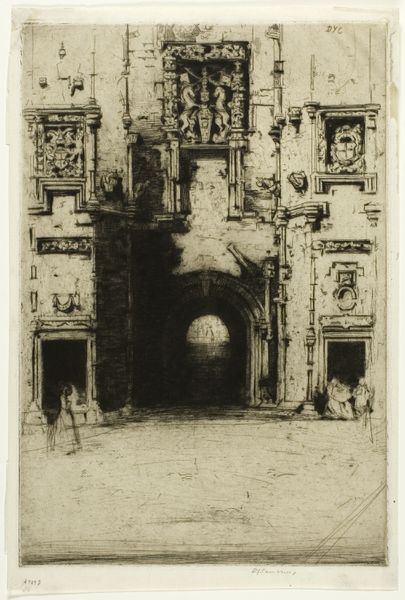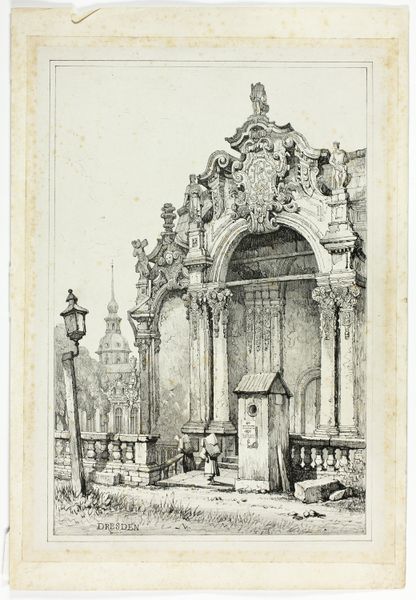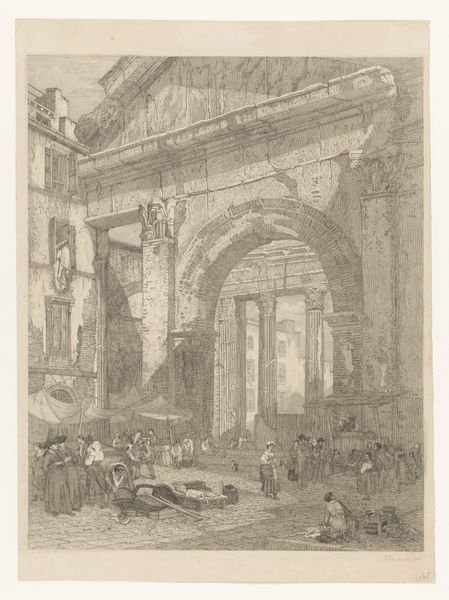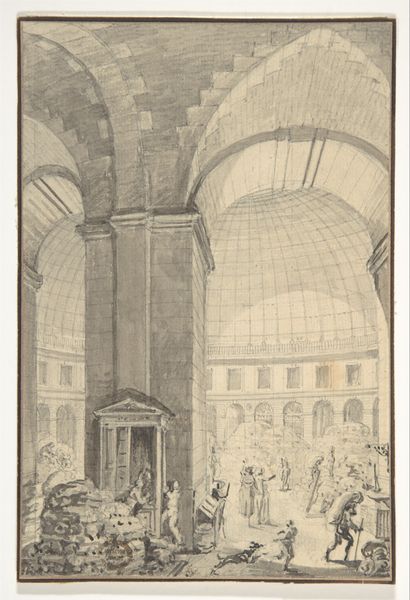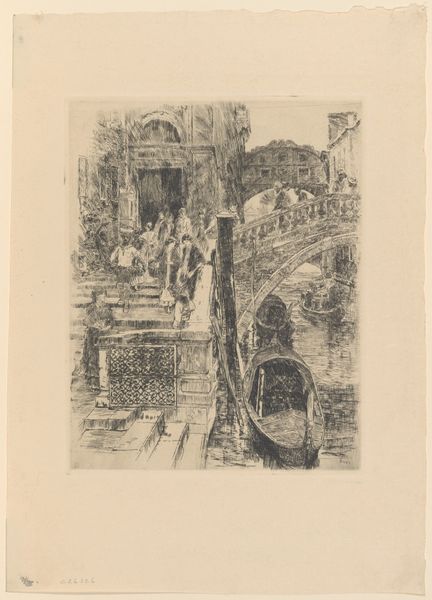
drawing, print, etching, ink
#
portrait
#
drawing
# print
#
etching
#
ink
#
cityscape
#
realism
Dimensions: height 262 mm, width 220 mm
Copyright: Rijks Museum: Open Domain
Curator: The density of the cross-hatching in this print gives me an immediate sense of claustrophobia. Is it just me, or does it feel a little oppressive? Editor: This etching, titled "Marché des Carmes in Parijs" by Martin Monnickendam, dating from between 1884 and 1931, offers a glimpse into the hustle and bustle of a Parisian marketplace. What might read as oppressive to you might represent the vitality of the square, and its crucial place within Parisian society. Curator: I suppose you're right; that dense cross-hatching also creates a fantastic interplay of light and shadow that animates the whole scene. There's something very stark about the classical bust positioned in the center as a stoic emblem amidst the chaos of daily life. I read this as a dialogue between ideals and reality. Editor: Absolutely. Notice how Monnickendam strategically uses the bust as the primary axis, allowing for an organization of a potentially confusing subject. The architecture forms an interesting framing element. You could consider this etching an ode to Parisian perseverance amidst modernity. Curator: The etching, particularly, communicates resilience through both symbol and form. A fountain supports the bust. It seems that water symbolizes a cleansing ritual to protect Parisians, giving life in what seems like a dark place. There’s a connection to be made, too, between the clothing hung to dry in the background and a vulnerability laid bare for protection by classical ideals. Editor: The choice to render the market with such intricate detail and tonal range is crucial. The dark inks produce a rich visual texture that mirrors the bustling environment Monnickendam portrays, reflecting both the hardship and liveliness that define this urban space. It is difficult not to contemplate our relationship to the people shown given the perspective point in this work. Curator: I hadn’t considered that, but, of course, we enter the marketplace with all the baggage of contemporary culture that might affect what we project onto these inhabitants. I appreciate how this scene allows for us to see the many layers of time and values reflected within a singular, lively place. Editor: And it brings a level of analytical thinking together with an intuitive engagement with a space to come to appreciate its meaning.
Comments
No comments
Be the first to comment and join the conversation on the ultimate creative platform.
